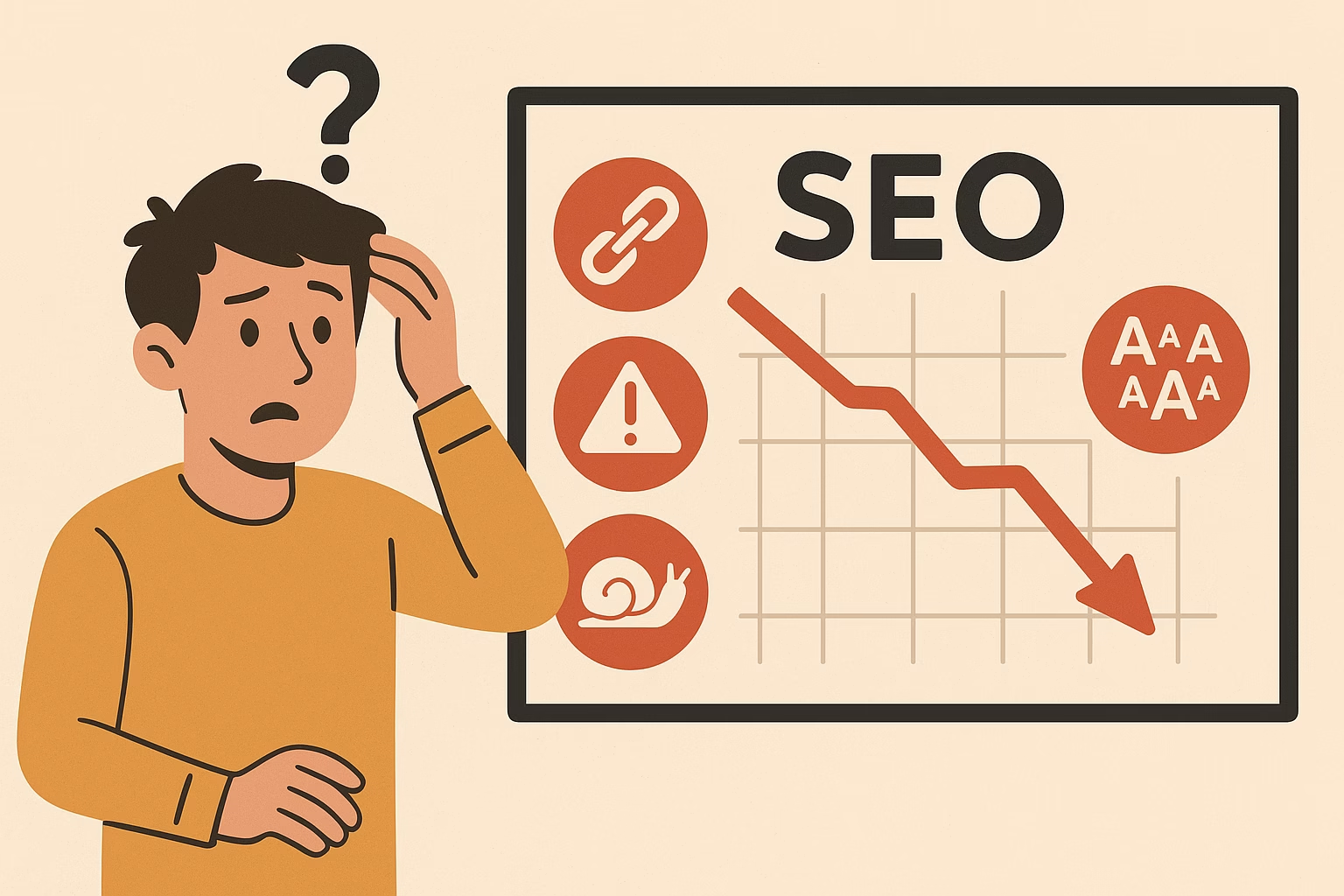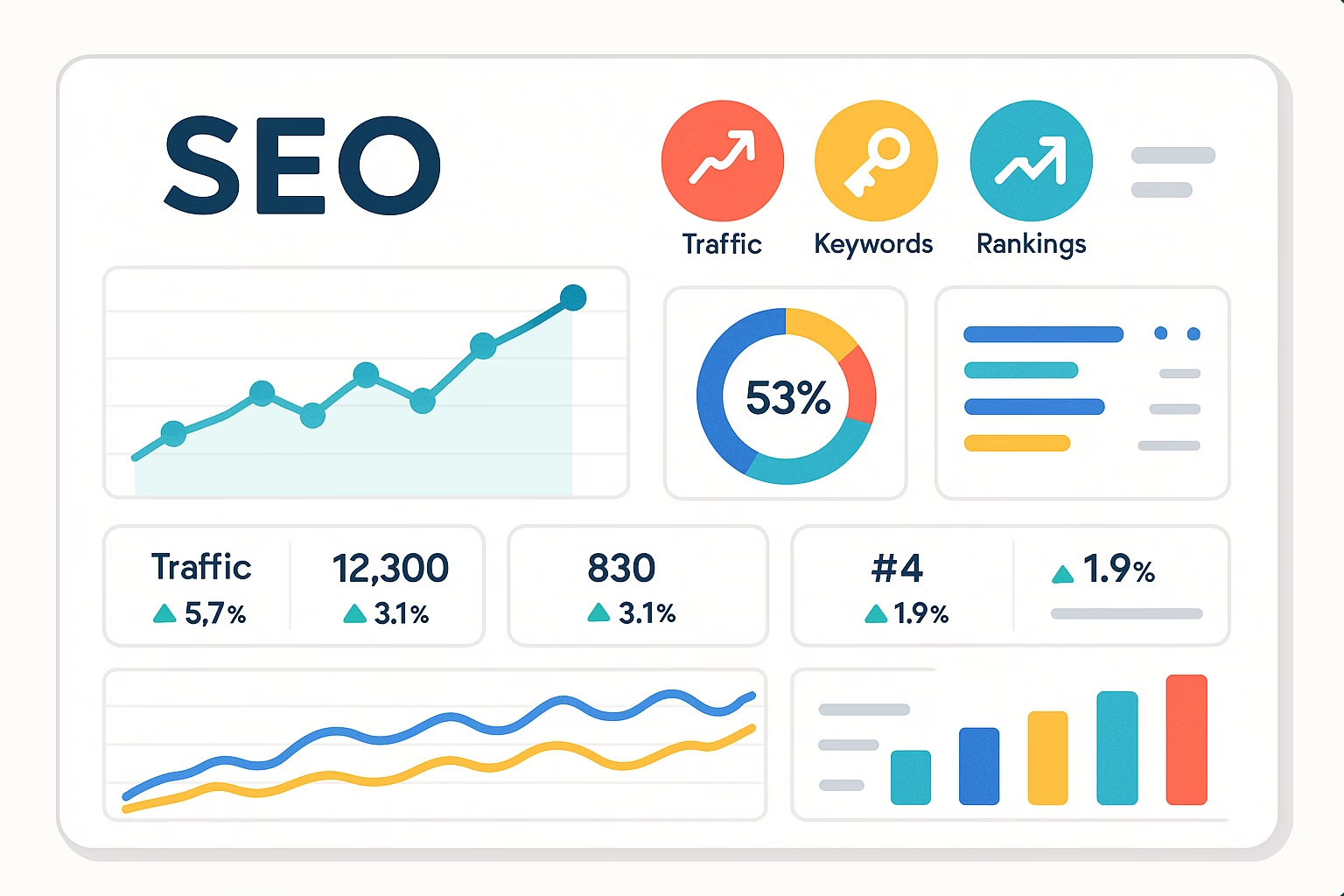Common SEO Mistakes to Avoid in 2025
Introduction
Search engine optimization in 2025 is more complex, competitive, and AI-driven than ever before. While new opportunities are emerging, so are more ways to go wrong. If you’re not careful, your hard work can get lost in the noise—or worse, penalized by search engines. In this detailed guide, we highlight the most common SEO mistakes in 2025 and how to avoid them.
1. Ignoring Search Intent
Ranking a blog post for the wrong intent leads to high bounce rates and poor conversions. Always match your content to the user’s goal: informational, transactional, or navigational. Use Google search results as a guide to understand the intent behind every keyword.
2. Writing for Bots, Not People
Overusing keywords, stuffing titles, or writing robotic sentences is a surefire way to lose rankings. Google’s algorithms reward natural, helpful content that’s enjoyable to read. Focus on value and clarity, not tricks.
3. Publishing Thin Content
Short blog posts without depth, multimedia, or structure won’t cut it. Aim for at least 1500–2000 words per post with sections, visuals, examples, and answers to related questions. For example, our SEO Blog Writing Guide explains how to structure in detail.
4. Ignoring Mobile Optimization
Over 60% of all traffic is mobile. If your website isn’t responsive, fast, and easy to use on small screens, you’ll lose visitors and rankings. Use tools like Google’s Mobile-Friendly Test.
5. Not Updating Old Content
Outdated posts hurt SEO. Refresh older blogs by:
- Adding new statistics
- Updating links
- Optimizing titles and meta descriptions
- Restructuring for clarity
6. Skipping Internal Links
Internal links improve crawlability, time on site, and authority distribution. Link to related content naturally—like our On-Page SEO Guide.
7. Ignoring Technical SEO
Pages with slow load times, broken links, or crawl issues won’t perform. Use Screaming Frog, Ahrefs, or SEMrush to run regular audits and fix problems fast.
8. Overusing AI Content Without Editing
In 2025, AI tools are helpful but overreliance leads to generic, low-value content. Always human-edit AI-generated text for tone, originality, and accuracy.
9. Missing or Misusing Schema Markup
Schema enhances your appearance in search (rich snippets). Use FAQ, HowTo, Article, and LocalBusiness schema where appropriate—and validate using Google’s Rich Results Test.
10. Not Tracking Performance
Flying blind without metrics is a mistake. Use GA4, Search Console, and rank trackers to monitor what’s working and where to improve.
11. Duplicate Content
Copying from other sites or duplicating pages on your own domain dilutes authority. Always use canonical tags or rewrite pages to be unique.
12. Targeting Irrelevant or High-Competition Keywords
New sites shouldn’t chase keywords like “best smartphone” right away. Focus on long-tail, local, or niche keywords to gain traction.
13. Neglecting the User Experience (UX)
Bad design, intrusive ads, and confusing layouts hurt rankings. UX is a ranking factor. Prioritize clean design, fast loads, and intuitive navigation.
14. Not Leveraging Video and Visual Content
Users prefer mixed media. Add infographics, screenshots, and even short videos to boost engagement and SEO value.
15. Not Securing the Website
Still running on HTTP? Switch to HTTPS. It’s a trust signal and ranking factor. Also protect your site from malware and downtime.
Conclusion
In 2025, SEO success comes from doing the fundamentals well—and avoiding mistakes that cost visibility and trust. Audit your site often, stay current with algorithm changes, and keep the user experience front and center. With consistency and smart strategy, you’ll stay ahead of your competitors and the next Google update.










